
Current Environmental Health Reports
Scope & Guideline
Unveiling the science behind environmental health risks.
Introduction
Aims and Scopes
- Environmental Health Risks Assessment:
The journal explores various environmental health risks, including exposure to toxic metals, pollutants, and chemicals. It publishes studies that assess health risks associated with these exposures and their implications for public health. - Impact of Environmental Factors on Vulnerable Populations:
A core area of focus is the effect of environmental exposures on vulnerable populations, such as children, pregnant individuals, and marginalized communities. Research highlights how social determinants intersect with environmental health. - Innovative Methodologies for Environmental Monitoring:
The journal emphasizes the use of innovative methodologies for assessing environmental health, including biomonitoring techniques and geovisualization tools that enhance public understanding of environmental hazards. - Interdisciplinary Approaches to Environmental Health:
Research published in the journal often adopts interdisciplinary perspectives, integrating insights from epidemiology, toxicology, environmental science, and social sciences to address complex health issues. - Policy and Practice Implications:
The journal seeks to inform policy and practice by publishing studies that evaluate existing health policies related to environmental exposures and propose strategies for improvement.
Trending and Emerging
- Health Impacts of Climate Change:
There is an increasing focus on the health implications of climate change, including its effects on mental health, respiratory conditions, and the exacerbation of existing health disparities. - Chemical Exposures and Epigenetics:
Research examining the relationship between environmental chemical exposures and epigenetic changes is on the rise, highlighting the long-term health implications of early-life exposures. - Environmental Justice and Health Equity:
A significant trend is the increasing emphasis on environmental justice, particularly how environmental exposures disproportionately affect marginalized communities and the need for equitable health policies. - Innovative Biomonitoring Techniques:
The use of novel biomonitoring techniques, such as tear fluid analysis and wearable sensors, is gaining traction, allowing for more precise assessments of individual exposure to environmental toxins. - Interdisciplinary and Collaborative Research:
There is a growing trend towards interdisciplinary research that combines insights from various fields, including sociology, epidemiology, and environmental science, to tackle complex health issues related to environmental exposures.
Declining or Waning
- Traditional Occupational Exposures:
Research focusing solely on traditional occupational exposures has decreased, possibly due to an increased emphasis on broader environmental factors and their cumulative effects on health. - Single Chemical Exposure Studies:
The trend of investigating single chemical exposures has waned, with a shift towards understanding complex mixtures and their interactions with biological systems, reflecting a more holistic view of environmental health. - Static Environmental Health Models:
There is a noticeable decline in publications utilizing static models for environmental health assessments. The field is moving towards dynamic models that account for changing environmental conditions and their impacts on health. - Generalized Population Studies:
Research that does not focus on specific populations or vulnerable groups has diminished, as there is now a stronger emphasis on health disparities and the effects of environmental exposures on specific demographics. - Historical Epidemiological Studies:
There has been a decline in studies that solely rely on historical epidemiological data without integrating contemporary environmental health challenges, such as climate change and emerging pollutants.
Similar Journals
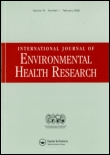
INTERNATIONAL JOURNAL OF ENVIRONMENTAL HEALTH RESEARCH
Unraveling Environmental Impact on Human HealthINTERNATIONAL JOURNAL OF ENVIRONMENTAL HEALTH RESEARCH, published by Taylor & Francis Ltd, serves as a cornerstone for interdisciplinary research focusing on the crucial intersections of environmental science and public health since its inception in 1991. With an ISSN of 0960-3123 and an E-ISSN of 1369-1619, the journal spans diverse topics related to environmental health, toxicology, and pollution science, holding high ranks in 2023 such as Q2 in Pollution and Public Health, showcasing its vital contributions to the field. Researchers will appreciate its robust platform as it features rigorous peer-reviewed articles aimed at unveiling the complexities of human health in relation to environmental factors. While the journal maintains a traditional access model, it ensures broad dissemination of high-quality research works. As a reputable source for both emerging and established scholars, the International Journal of Environmental Health Research offers critical insights and advancements pivotal to fostering a healthier planet.

Journal of Environmental Science and Health Part C-Toxicology and Carcinogenesis
Advancing Knowledge on Toxicology and CarcinogenesisThe Journal of Environmental Science and Health Part C-Toxicology and Carcinogenesis is a vital publication in the fields of environmental science, toxicology, and cancer research, published by Taylor & Francis Inc. With an ISSN of 2689-6583 and E-ISSN 2689-6591, this journal provides a platform for peer-reviewed research that explores the intersection of environmental factors and health outcomes, particularly focusing on toxicological and carcinogenic impacts. Though it does not currently offer Open Access, it remains a significant contributor to academia with its current ranking in the Q4 category for Cancer Research and Q3 in Health, Toxicology and Mutagenesis. The journal has converged from 2020 to 2024 and aims to disseminate pioneering studies that inform public health policies and foster a deeper understanding of environmental toxins. Aspiring researchers, professionals, and students will find this journal to be an essential resource for the latest findings and discussions within these critical fields.
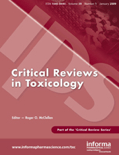
CRITICAL REVIEWS IN TOXICOLOGY
Illuminating the Complexities of Toxicity and Risk AssessmentCRITICAL REVIEWS IN TOXICOLOGY, published by Taylor & Francis Ltd, stands as a preeminent journal within the field of toxicology, boasting an impressive Q1 ranking and holding the distinction of being ranked 12th out of 133 in the toxicology category according to Scopus, placing it in the top 91st percentile. With a continuous publication history since 1971 and a commitment to providing high-quality reviews, the journal offers critical insight into the latest research and advancements in toxicological sciences. While it is not an open-access journal, it provides numerous access options for both subscribers and institutions, ensuring that its extensive articles are widely available to the academic community. The journal's objectives are to disseminate comprehensive reviews that foster understanding and innovation in the assessment of chemical risks, environmental impacts, and the mechanisms of toxicity, making it an invaluable resource for researchers, professionals, and students dedicated to the science of toxicology.
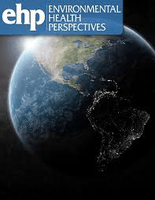
ENVIRONMENTAL HEALTH PERSPECTIVES
Transforming research into action for public health.Environmental Health Perspectives (EHP) is a premier open-access journal published by the U.S. Department of Health and Human Services, Public Health Science, dedicated to publishing rigorous and impactful research in the field of environmental health. Since its inception in 1972, EHP has become a leading platform for disseminating knowledge on the interactions between the environment and human health, making significant contributions to the fields of toxicology and public health. With an impressive impact factor and a Q1 ranking in both Health, Toxicology and Mutagenesis and Public Health, Environmental and Occupational Health categories, EHP ranks among the top journals globally, reflecting its high citation and visibility within the academic community. Researchers, professionals, and students alike will find a wealth of vital information within its pages, as EHP covers a wide array of topics related to environmental exposures, health outcomes, and policy implications. Furthermore, EHP engages with a global audience through its commitment to open access, ensuring that critical research is available to all, enhancing the collective understanding of environmental health issues since 1972.
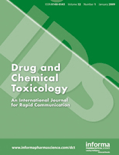
DRUG AND CHEMICAL TOXICOLOGY
Championing interdisciplinary research in toxicology.Drug and Chemical Toxicology is a well-respected journal in the fields of toxicology, pharmacology, and public health, published by Taylor & Francis Ltd. Since its inception in 1978, this journal has diligently explored the effects and mechanisms of chemical exposures on health and the environment, fulfilling a crucial role in advancing scientific understanding and safeguarding public health. The journal is indexed across prestigious databases and features an impressive array of articles categorized within the Q2 and Q3 quartiles across various categories in 2023, reflecting its significance in Chemical Health and Safety as well as Environmental and Occupational Health disciplines. With an extensive reach and a focus on interdisciplinary research, Drug and Chemical Toxicology offers a rich repository of original research, reviews, and methodological advancements, catering to a diverse audience of researchers, professionals, and students dedicated to the betterment of safety and health standards. Although not an open-access publication, its articles are widely accessible to the academic community, ensuring that critical innovations and insights are shared for the greater good.
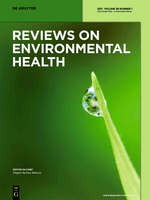
REVIEWS ON ENVIRONMENTAL HEALTH
Empowering research for a healthier planet.REVIEWS ON ENVIRONMENTAL HEALTH, published by Walter de Gruyter GmbH, serves as a critical platform for interdisciplinary research in the field of environmental health. With a history dating back to 1974, this journal has established itself as a reputable source for scholarly articles that address pressing issues at the intersection of public health, pollution, and environmental sciences. The journal is ranked in the Q2 category across multiple domains, including Health (social science), Pollution, and Public Health, evidencing its impact within an increasingly vital discourse. Researchers and professionals will find REVIEWS ON ENVIRONMENTAL HEALTH particularly valuable as it contributes significant insights and fosters dialogue on environmental health challenges and solutions, all while enhancing its global accessibility. The journal maintains a robust presence on platforms like Scopus, ranking in the 90th percentile in social sciences and 86th in public health, further accentuating its importance in the academic community. With access to comprehensive reviews and original research articles, this journal not only enriches the current literature but also paves the way for innovative approaches to safeguarding environmental and public health.

Environnement Risques & Sante
Navigating the Complexities of Environmental SafetyEnvironnement Risques & Sante is a prominent journal focused on the intersection of environmental issues, public health, and safety, offering a platform for scholarly discourse on the critical challenges posed by environmental risks to human health. Published by JOHN LIBBEY EUROTEXT LTD, this journal aims to disseminate impactful research that enhances our understanding of toxicology, mutagenesis, and their implications for public health policy and practices. Though it ceased coverage in Scopus in 2021, its historical contributions remain relevant, addressing urgent topics in environmental science and occupational health. Researchers and professionals engaged in these fields will find valuable insights and findings that inform practice and promote sustainable solutions. For interested readers, further exploration of the journal can provide essential knowledge in coping with contemporary environmental health challenges.
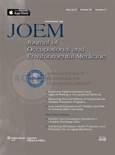
JOURNAL OF OCCUPATIONAL AND ENVIRONMENTAL MEDICINE
Bridging public health and occupational safety.JOURNAL OF OCCUPATIONAL AND ENVIRONMENTAL MEDICINE, published by Lippincott Williams & Wilkins, is a premier journal dedicated to advancing the field of occupational and environmental health. With a rich history dating back to 1959 and a notable impact factor reflecting its relevance, the journal operates at the intersection of public health and environmental science, ranking in the Q2 category in the 2023 Scopus rankings within its field. It caters to a diverse audience of researchers, healthcare professionals, and students, providing a vital platform for peer-reviewed articles that address critical issues in occupational and environmental medicine. The journal’s mission is to disseminate innovative research findings and establish best practices that improve workplace safety and public health. With a focus on high-quality, evidence-based content, JOURNAL OF OCCUPATIONAL AND ENVIRONMENTAL MEDICINE plays a crucial role in shaping policy and fostering interdisciplinary collaboration among practitioners and scholars in the health sector.
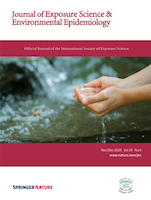
Journal of Exposure Science and Environmental Epidemiology
Empowering Research for a Healthier PlanetJournal of Exposure Science and Environmental Epidemiology, published by SPRINGERNATURE in the United Kingdom, is a leading platform for researchers and practitioners dedicated to understanding the interplay between environmental factors and human health. With an impressive impact factor and Q1 and Q2 rankings across multiple categories such as Pollution and Public Health, the journal has established itself as a critical resource in the fields of epidemiology, toxicology, and environmental science. Covering a wide spectrum of studies from 2006 to 2024, it aims to disseminate timely research that empowers professionals and informs policy decisions. Although there is no open access option at this time, the journal's rigorous peer-review process ensures that only high-quality research is published, further cementing its reputation as a vital source of knowledge for advancing public health and environmental protection.
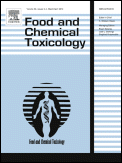
FOOD AND CHEMICAL TOXICOLOGY
Advancing food safety through rigorous toxicological research.FOOD AND CHEMICAL TOXICOLOGY, published by Pergamon-Elsevier Science Ltd, is a prestigious journal with a significant impact in the fields of food science, medicine, and toxicology, reflecting its Q1 and Q2 quartile rankings in various categories as of 2023. Established in 1982, this journal continues to serve as an essential platform for disseminating high-quality research focused on the toxicological assessment of foods and chemicals, aiming to advance knowledge that affects public health and safety. With a pivotal role in integrating diverse disciplines, including pharmacology and agricultural sciences, the journal ranks impressively within the top percentiles—specifically 95th in Toxicology and 92nd in Food Science on the Scopus metrics. Though it operates on a traditional subscription model, the journal is committed to providing valuable insights and findings to researchers, professionals, and students across the globe, making it a vital resource in the ongoing discourse around food safety and environmental health. Its comprehensive scope underscores its importance in shaping evidence-based policies and practices.